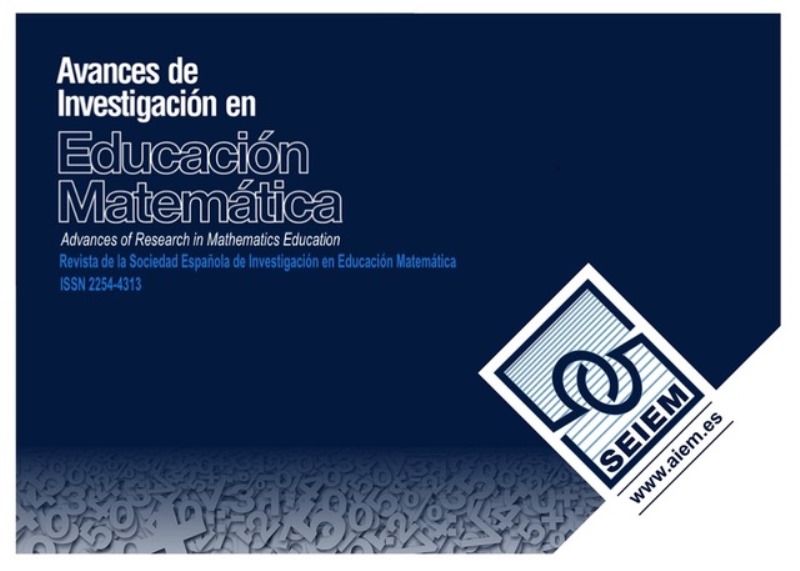The quadratic function: variation, transparency and two types of examples
DOI:
https://doi.org/10.35763/aiem.v0i3.62Keywords:
ArrayAbstract
The use of examples is a resource that all mathematics teachers bring into play to teach mathematical content. Although the teaching methods might be very different, the exemplification they include may have some features in common and, in this paper, we present two of those features: the variation and the transparency. These two aspects examples have may be combined in a way that generalization and abstraction can be better achieved by students; in particular, we illustrate this symbiosis in the case of the study of the quadratic function.However, different exemplifications produce also different kind of examples. In the investigation here presented, we found major differences that allowed us to identify two types of very different examples, though with the same propose and equally effective.
Downloads
Download data is not yet available.
Downloads
Published
2013-05-03
How to Cite
, & . (2013). The quadratic function: variation, transparency and two types of examples. Advances of Research in Mathematics Education, (3), 45–68. https://doi.org/10.35763/aiem.v0i3.62
Issue
Section
Artículos
License
The articles published in this journal are under a license Creative Commons: By 4.0 España from number 21 (2022).
Authors who publish with this journal agree to the following terms:
- Authors retain copyright and keep the acknowledgement of authorship.
- The texts published in this journal are – unless indicated otherwise – covered by the Creative Commons Attribution 4.0 international licence. You may copy, distribute, transmit and adapt the work, provided you attribute it (authorship, journal name, publisher) in the manner specified by the author(s) or licensor(s). The full text of the licence can be consulted here: http://creativecommons.org/licenses/by-nc/4.0.
- Authors are able to enter into separate, additional contractual arrangements for the non-exclusive distribution of the journal's published version of the work (e.g., post it to an institutional repository or publish it in a book), with an acknowledgement of its initial publication in this journal.
- Authors are permitted and encouraged to post their work online (e.g., in institutional repositories or on their website) prior to and during the submission process, as it can lead to productive exchanges, as well as earlier and greater citation of published work (See The Effect of Open Access).









